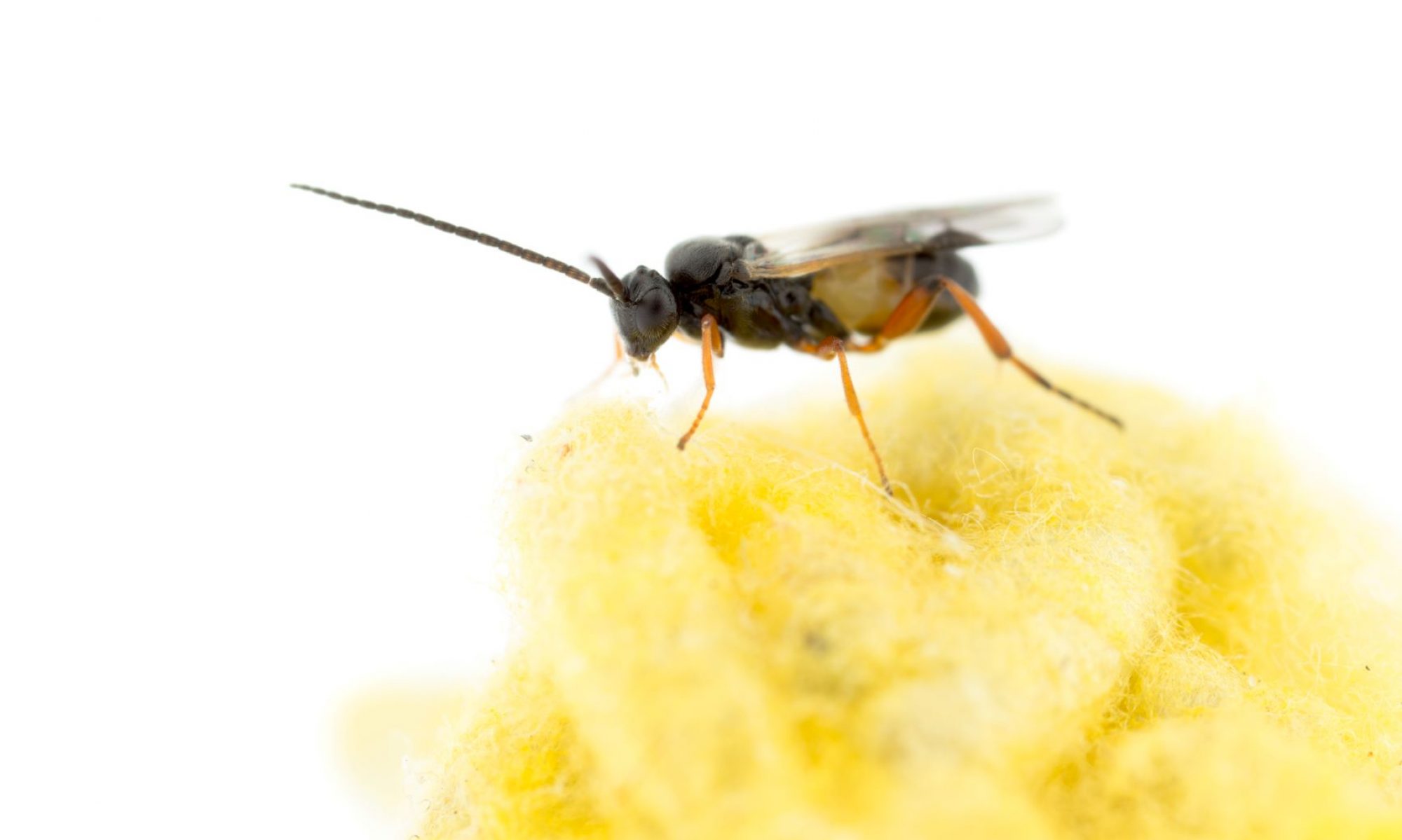Hello Waikerie! Winter is coming, which means less bugs in the traps – less insects fly in winter as they normally need warmth from the sun for energy. Whilst the trap I just finished sorting (up from 31 March to 7 April) had less insects in it than the last ones, there was still lots of very cool finds.
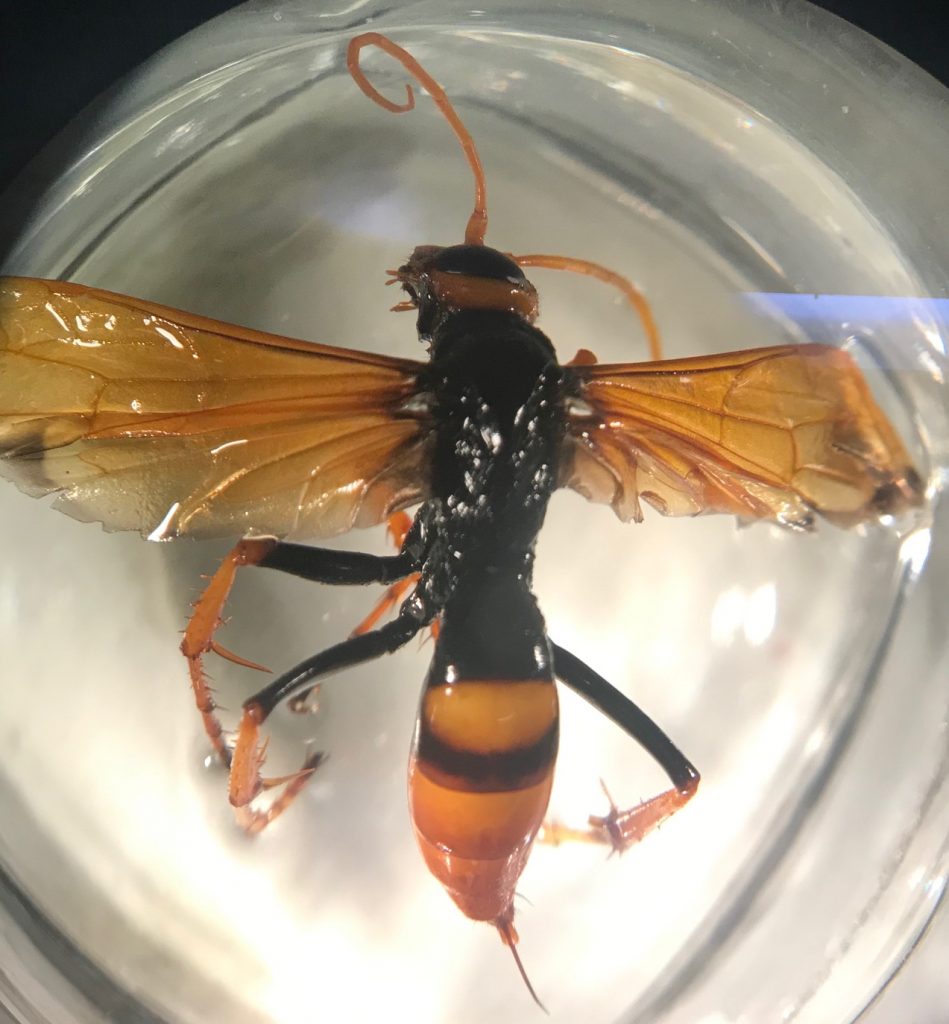
There was a female wasp in the family Pompilidae (spider hunting wasps) – you can see her ovipositor (it looks like a stinger) in the photo above, which is how I know she is female. This is what she would use to lay her egg on a paralysed spider that she has hidden in a burrow, providing fresh food for her baby when it hatches out. You caught a few different species of these in your last trap – but this one has some very typical spider-wasp orange colouring!

The funny looking yellow insect above is a true bug (order Hemiptera), in the superfamily Fulgoroidea (the plant hoppers), I think (but I could be wrong) in the family Dictyopharidae or Fulgoridae. This group of planthoppers have their head super stretched out, looking like like have a super long nose! Insects don’t have noses though, they breath through spiracles (little holes along the sides of their body) and sense smells like pheromones through lots of different setae (little hairs) and structures on their body.
Fulgoroid planthoppers are really cool bugs, and come in some super strange shapes and colours – there’s a few photos below of species that would be in the same group as the one you caught, but I don’t think any of them are the same species. They are sometimes called ‘lantern flies’ as there was a myth that the long ‘nose’ part would light up a night – but this is just a myth – it definitely doesn’t glow in the dark!

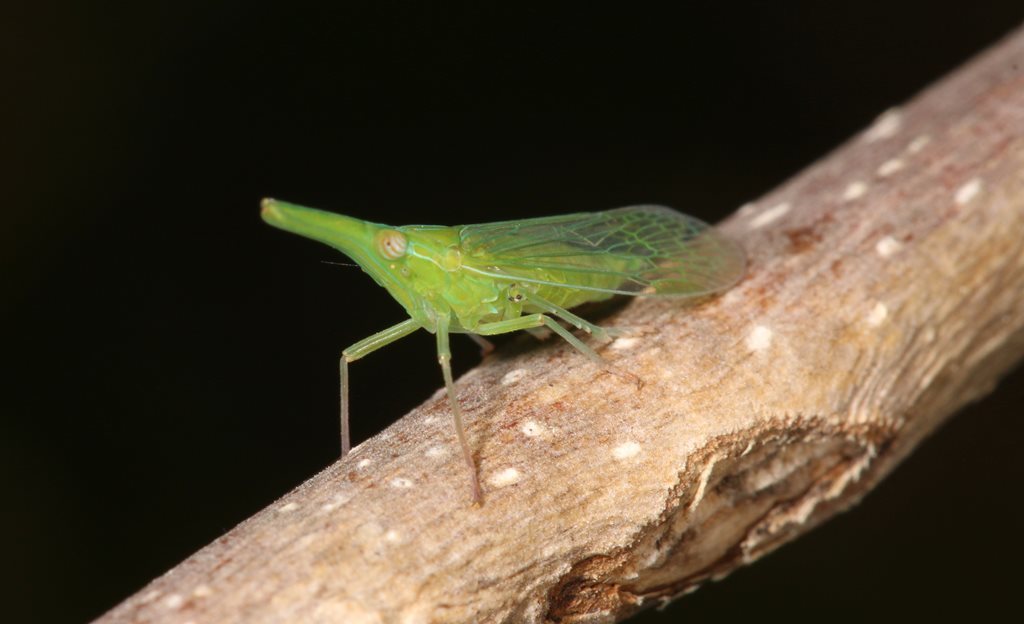
This trap was also CHOCK-A-BLOCK FULL of sprintails – arthropods in the group Collembola. They have six legs and are closely related to insects, but aren’t actually insects – they are one of their closest relatives.
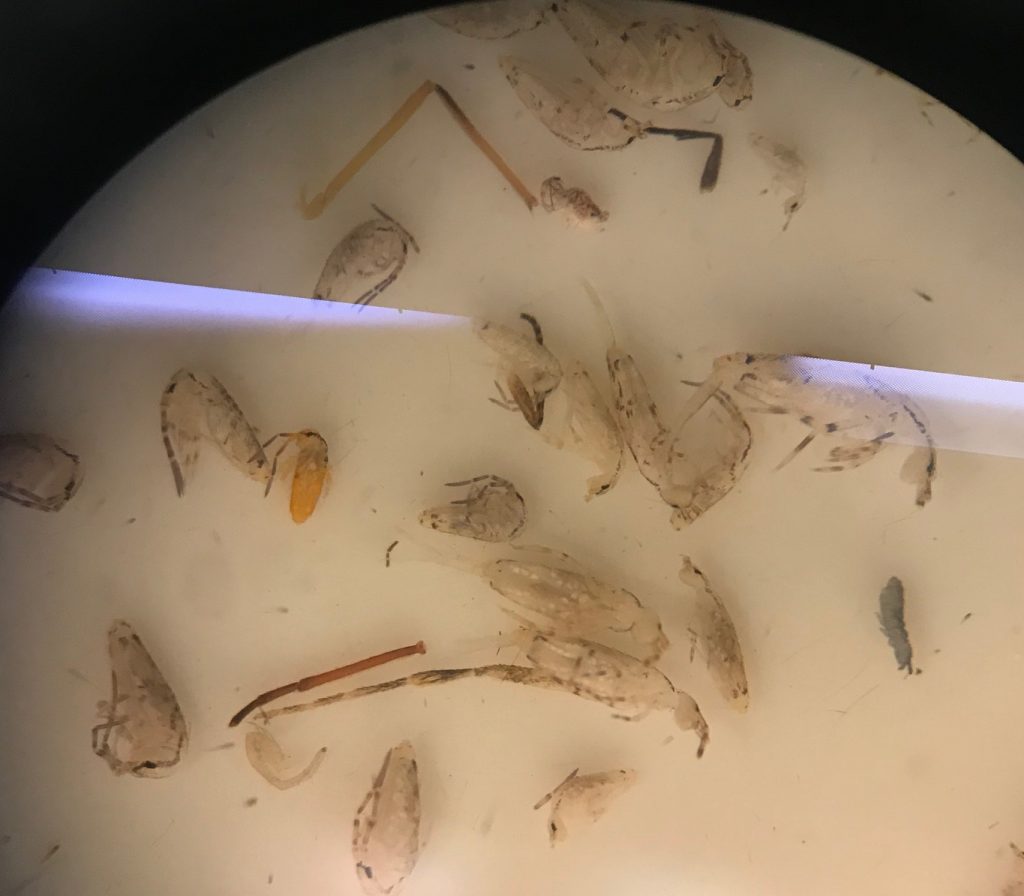
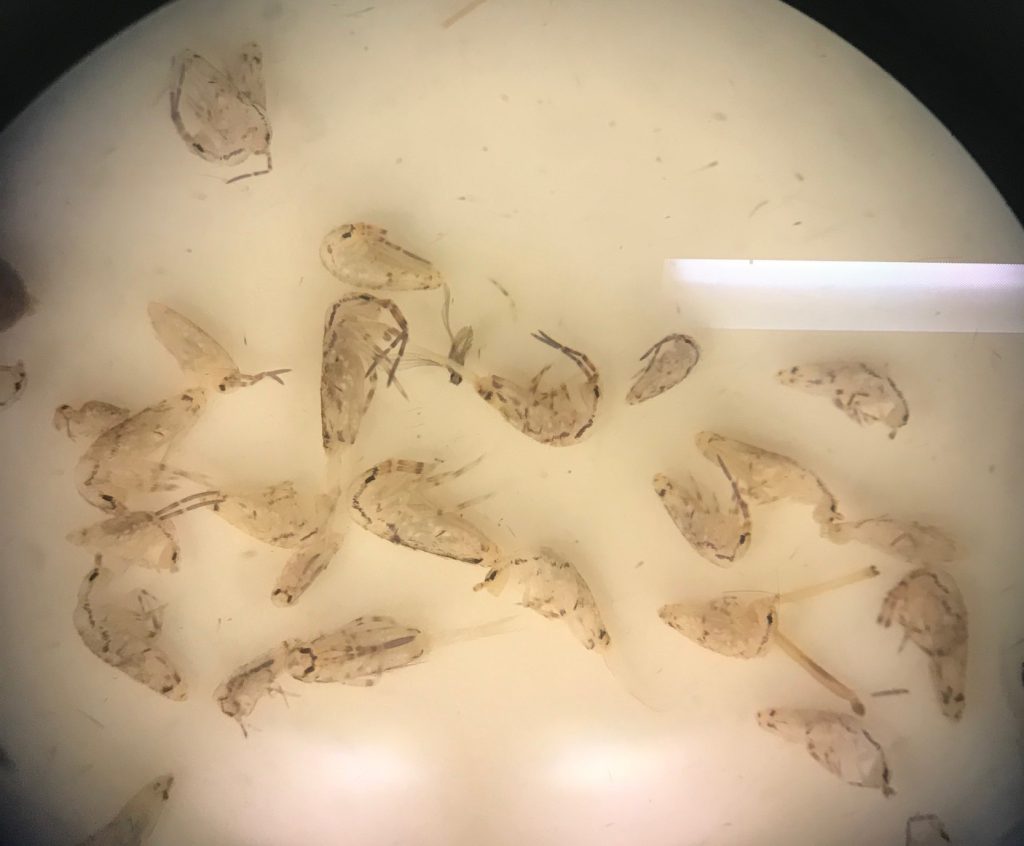
Collembola are called springtails because they have a long appendage at the end of the abdomen that they keep held under tension – when they release it they can spring really high in the air – like travelling on a pogo stick!
There were a few different species of Collembola in the trap – can you spot them in the photos above? There were some little grey ones like this:

LOTS of white ones with long antennae:

…and even a couple of yellow ones!
Springtails are super cute! They live in damp environments, so are probably living in the soil by the lagoon – perhaps it rained this week and they all decided to venture out?
